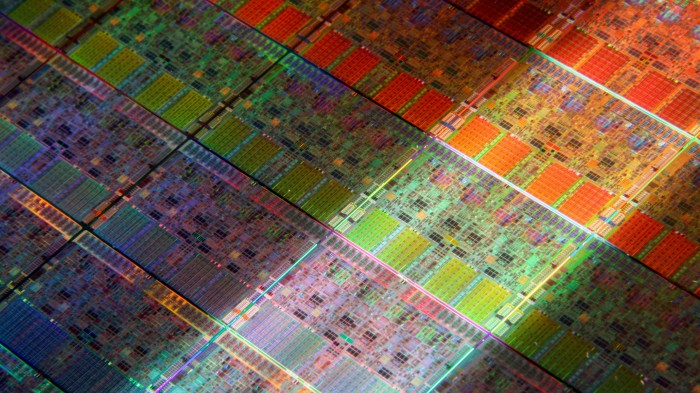Chip Makers Admit Transistors Are About to Stop Shrinking
Moore’s Law has been slowing for a while. But the U.S. industry that exploits it has finally recognized that it is about to die.
The Semiconductor Industry Association—made up of the likes of Intel, AMD, and Global Foundries—has published the 2015 International Technology Roadmap for Semiconductors. It suggests that, after decades of miniaturization, transistors look set to stop shrinking in size altogether by 2021. After that date, the report claims, it will not be economically efficient to reduce the size of silicon transistors any further.
The prediction is an acknowledgment that Moore’s Law—which states that the number of transistors in an integrated circuit doubles approximately every two years—isn't simply slowing. It’s grinding to a halt.

Earlier this year, Intel announced that it was slowing down the pace of chip advancement and pushing back the release of its smallest-ever transistor technology—made up of features as small as 10 nanometers—from 2016 to 2017. In fact Intel has already warned that conventional silicon transistors could only keep shrinking for another five years.
But the wider industry’s acceptance of the trend doesn’t herald the death of chip technology. There are, fortunately, other ways to make computers more capable.
We can expect chips to become more specialized, for instance—tuned to deal with certain tasks, such as graphics processing or artificial intelligence, rather than being fast all-rounders. The geometry of chips will likely change, too, with manufacturers developing systems that use multiple layers of circuitry, stacked one atop the other, to increase transistor density. And we can expect further effort to be directed toward improving energy efficiency over speed—something that SoftBank’s recently acquired ARM Holdings has been championing in recent years with its dominant range of chips designed for smartphones and Internet of things applications.
Moore’s Law may be about to die. But innovation certainly won’t.
(Read more: IEEE Spectrum, SIA, “Moore’s Law Is Dead. Now What?,” “Intel Puts the Brakes on Moore’s Law,” “Intel: Chips Will Have to Sacrifice Speed Gains for Energy Savings,” “$32 Billion Buyout of ARM Is a Giant Bet on the Internet of Things”)
Deep Dive
Computing
How ASML took over the chipmaking chessboard
MIT Technology Review sat down with outgoing CTO Martin van den Brink to talk about the company’s rise to dominance and the life and death of Moore’s Law.
How Wi-Fi sensing became usable tech
After a decade of obscurity, the technology is being used to track people’s movements.
Why it’s so hard for China’s chip industry to become self-sufficient
Chip companies from the US and China are developing new materials to reduce reliance on a Japanese monopoly. It won’t be easy.
Stay connected
Get the latest updates from
MIT Technology Review
Discover special offers, top stories, upcoming events, and more.